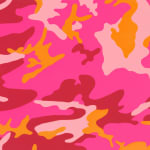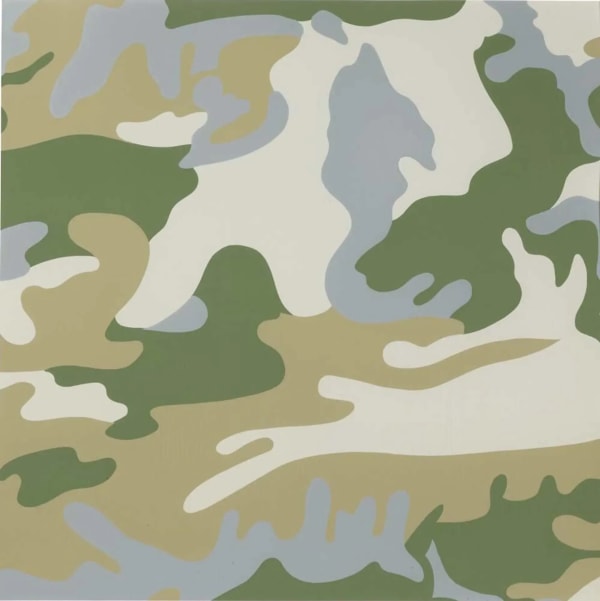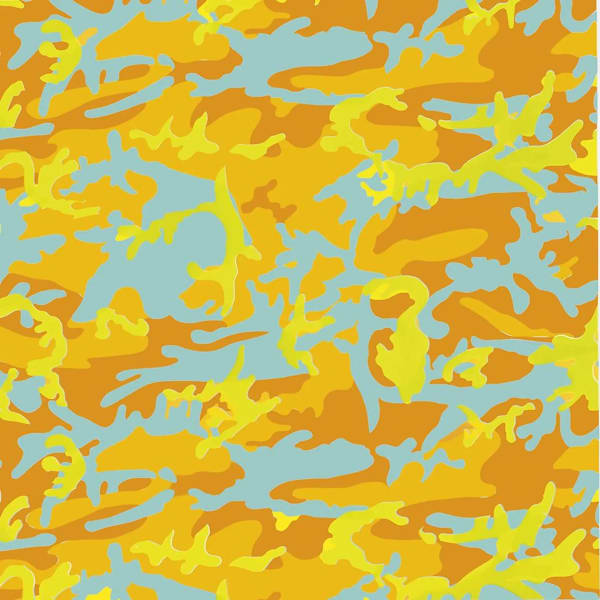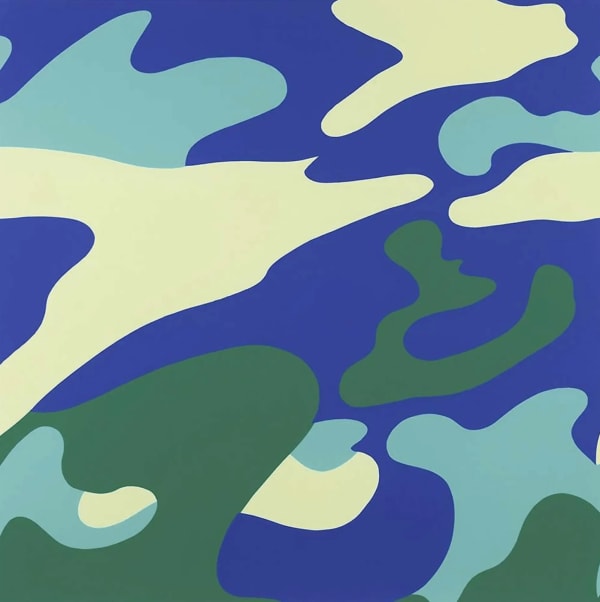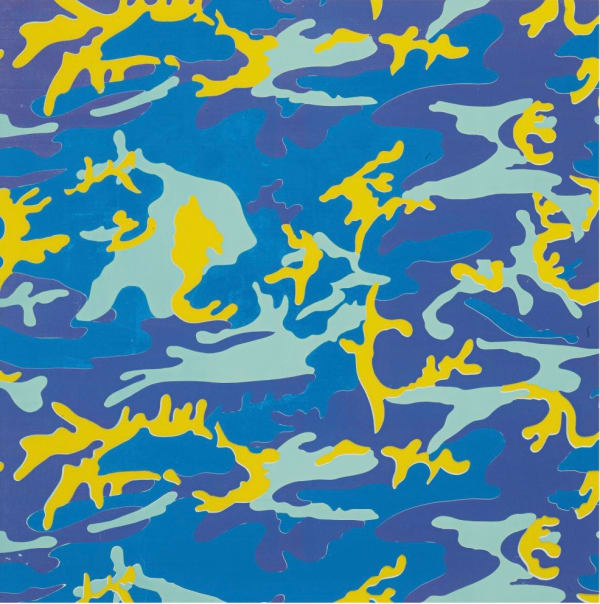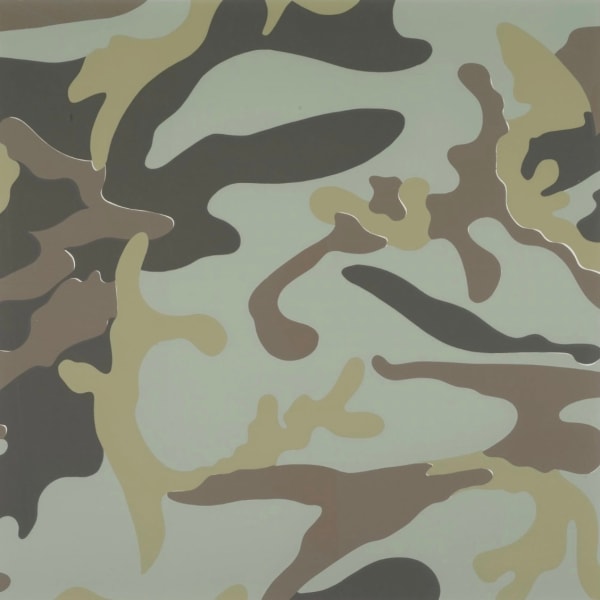
Andy Warhol
96.52 x 96.52 cm
Further images
Andy Warhol's Camouflage series, created in 1987, represents a departure from his more well-known works featuring celebrities, consumer products, and iconic figures. This series explores the concept of camouflage, utilizing the military pattern as a central motif in Warhol's distinctive pop art style.
The Camouflage series comprises a collection of artworks that prominently feature the camouflage pattern, typically associated with military uniforms and designed to blend soldiers into their surroundings. Warhol reinterprets this pattern through his artistic lens, transforming it into colorful, bold, and visually captivating compositions.
Using his characteristic silk-screening technique, Warhol creates repetitions and variations of the camouflage motif, manipulating colors and forms to produce vibrant and striking images. The camouflage pattern becomes a focal point, dominating the canvas in a way that challenges the traditional perception of its utilitarian purpose.
Warhol's fascination with repetition, mass production, and the interplay between art and popular culture is evident in the Camouflage series. By elevating this military motif into the realm of fine art, Warhol prompts viewers to reconsider the symbolism and cultural significance of camouflage beyond its original function.
The series reflects Warhol's interest in the intersection of art and society, inviting contemplation on themes such as concealment, visibility, and the relationship between the individual and their environment. Through these artworks, Warhol explores the tension between the intended purpose of the camouflage pattern and its transformation into an aesthetically charged symbol within the context of contemporary art.
Warhol's Camouflage series represents a departure from his more iconic subjects, yet it embodies his artistic experimentation and his ability to infuse everyday imagery with new meaning. It stands as a testament to Warhol's continual exploration of cultural symbols and his enduring impact on the dialogue surrounding art and its relationship with society.
-
 Andy WarholCamouflage F.S. II 406 , 1987
Andy WarholCamouflage F.S. II 406 , 1987 -
 Andy WarholCamouflage F.S. II 406-413 , 1987
Andy WarholCamouflage F.S. II 406-413 , 1987 -
 Andy WarholCamouflage F.S. II 407 , 1987
Andy WarholCamouflage F.S. II 407 , 1987 -
 Andy WarholCamouflage F.S. II 410 , 1987
Andy WarholCamouflage F.S. II 410 , 1987 -
 Andy WarholCamouflage F.S. II 413, 1987
Andy WarholCamouflage F.S. II 413, 1987 -
 Andy WarholCamouflage F.S. II 411, 1987
Andy WarholCamouflage F.S. II 411, 1987 -
 Andy WarholCamouflage F.S. II 409, 1987
Andy WarholCamouflage F.S. II 409, 1987 -
 Andy WarholCamouflage F.S. II 412, 1987
Andy WarholCamouflage F.S. II 412, 1987 -
 Andy WarholCamouflage Trial Proof TP 18/84, 1987
Andy WarholCamouflage Trial Proof TP 18/84, 1987 -
 Andy WarholCamouflage Trial Proof TP 4/84, 1987
Andy WarholCamouflage Trial Proof TP 4/84, 1987 -
 Andy WarholCamouflage Trial Proof TP 53/84, 1987
Andy WarholCamouflage Trial Proof TP 53/84, 1987
Join our mailing list
* denotes required fields
We will process the personal data you have supplied in accordance with our privacy policy (available on request). You can unsubscribe or change your preferences at any time by clicking the link in our emails.
This website uses cookies
This site uses cookies to help make it more useful to you. Find out more about cookies.
